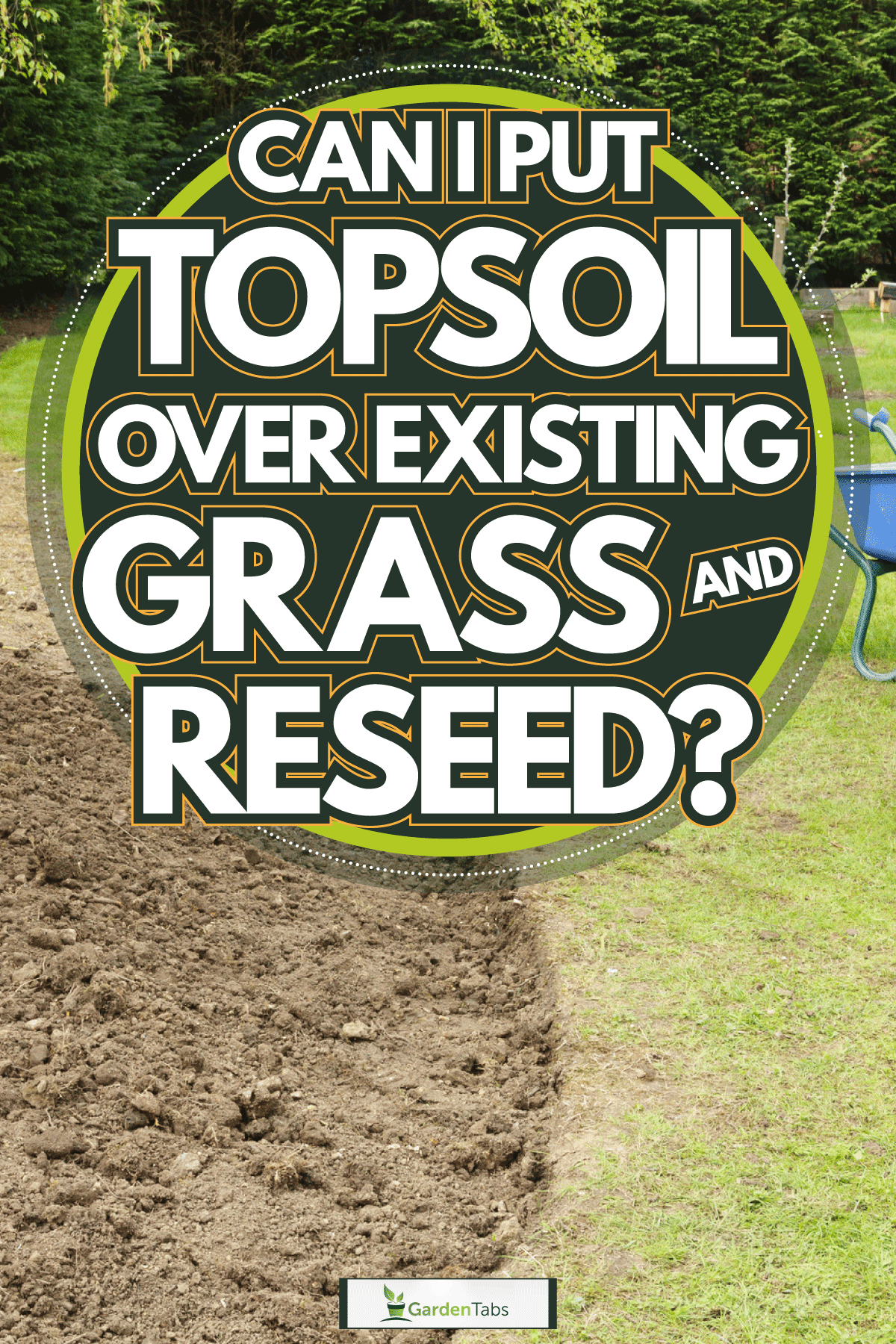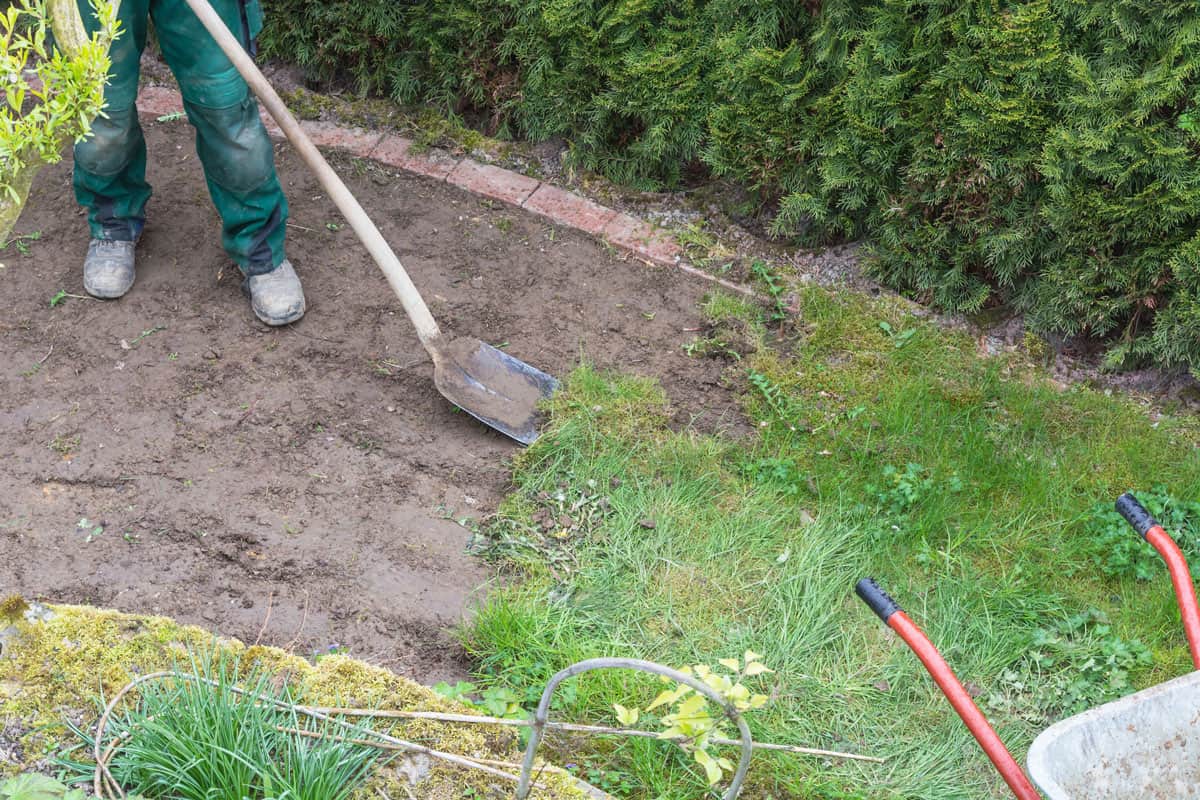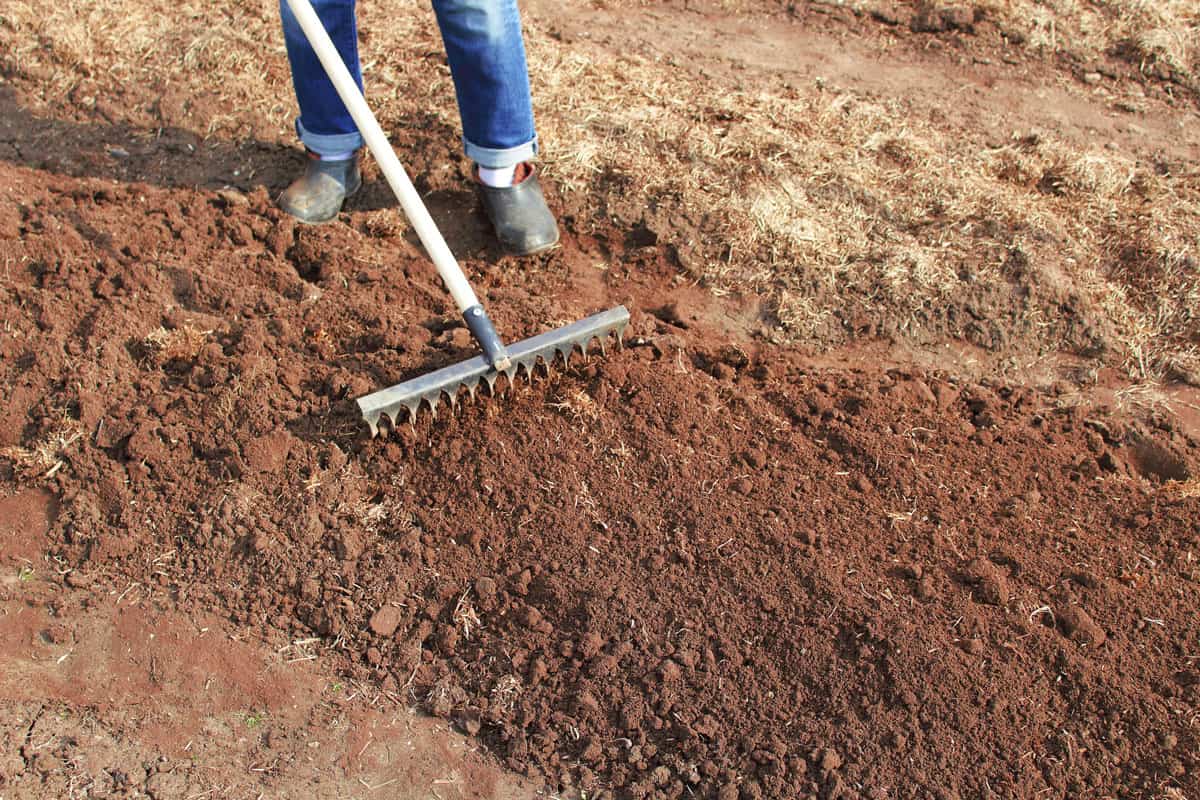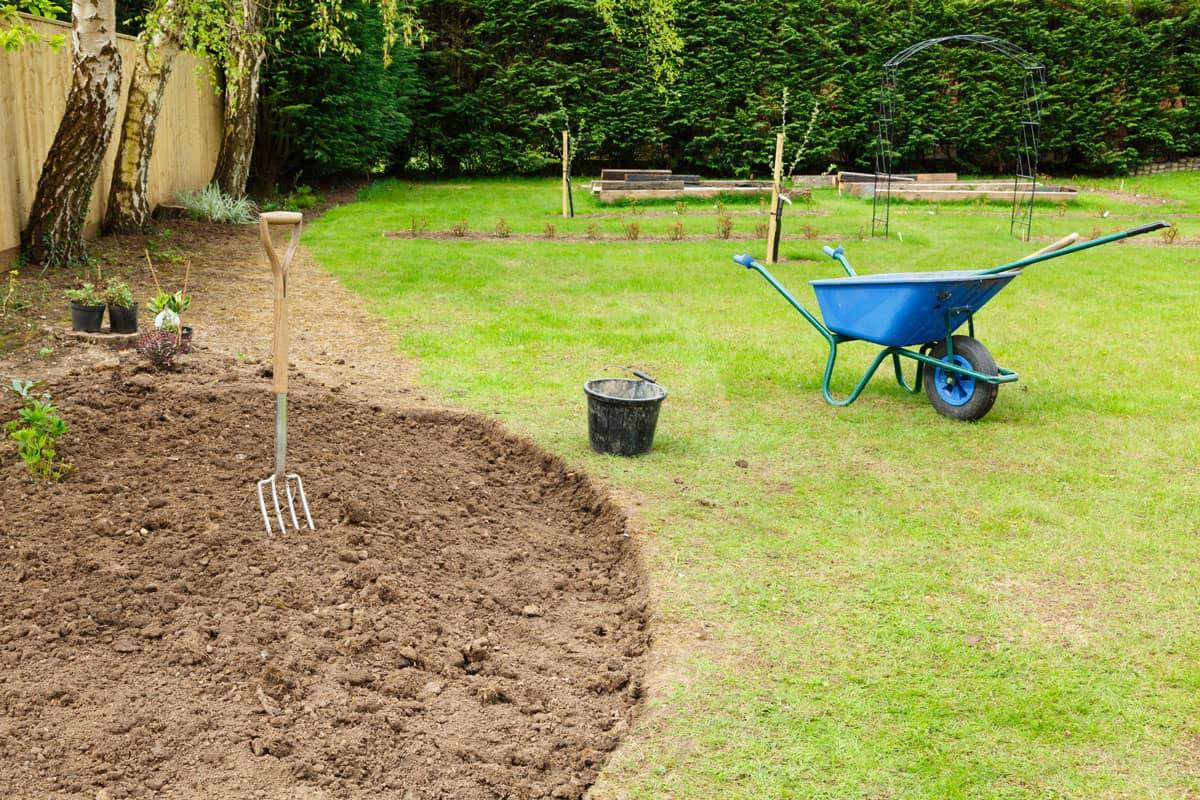Growing and maintaining a lush, healthy lawn can sometimes feel impossible. Do you think it's time to reseed, but you aren't sure whether adding topsoil on top of your current grass is a good plan? Will doing this kill the grass growing in your yard? Well, we've done some research and have these answers below.
For those wanting to reseed their lawns, you don't necessarily need to add topsoil beforehand. Considering that top dressing grass can put stress on it, you don't want to add more soil above a currently growing lawn.
However, if your grass isn't alive or looks bleak, you can apply topsoil and start fresh with your new grass seeds. This will come down to your lawn's general health.
As we begin, we will cover everything reseeding and discuss whether topsoil is necessary beforehand. Whether it's time for fresh grass or you can't seem to keep your lawn alive, we're here to help. With that said, let's dive right into this topic!

What Happens If You Put Topsoil On Top Of Grass?
If the time comes to reseed your lawn, you may consider adding topsoil beforehand. Although this sounds like a good idea, adding dirt above growing grass can harm it.
When you put topsoil above existing grass, it adds stress. That means you're burying the alive blades under layers of soil, which can kill it.
Therefore, many gardeners choose to skip this step, instead sprinkling the new seeds throughout their lawn without applying new soil.
According to the experts, the best time to apply topsoil to a lawn is a few weeks after the grass has begun growing actively. So if your grass is more mature, we don't think adding topsoil before reseeding is a good plan.
Furthermore, your property may not need reseeding if the grass is lush and healthy, so this isn't always required. Grass can be somewhat temperamental, so the less you fuss with it, the better.

Should You Apply Topsoil Before Reseeding Grass?
If you want to use some topsoil on your lawn before reseeding it, do this beforehand. People make a common mistake when reseeding: laying their seeds down and more soil.
Instead, try adding a thin layer of organic matter above your currently growing grass, and then apply the new seeds. The last thing you want is to suffocate your existing lawn and the new seedlings.
In addition, some experts warn that grass seeds need to be at surface level to sprout and grow. That means your new grass may not survive if you put too much dirt down, so this is something to consider.
As we said, topsoil acts as more of a fresh start for dying or dead grass rather than something you necessarily have to redo each year.
If your lawn looks healthy, there's not much need for a ton of new soil, but again, you should be able to apply a light layer before new seeds.
You can also simply sprinkle the new grass seeds over your lawn without dirt or organic matter and give them a thorough watering. You'll want to water your grass well either way.
How Do I Prepare My Lawn For Reseeding?

There are a few steps to take for anyone thinking they want to reseed their lawn. Most importantly, you need to mow your grass closer to the ground.
Doing this will enable the new seeds to make their way to the dirt, where they can start to grow. If your grass blades are too high, it's more likely for your seeds to get lost in the overhead area, ultimately failing to grow in the soil.
Once you mow, grab a rake and use it around your entire lawn. Raking will help loosen the existing soil, which is what your new seeds will need to survive.
According to Scotts, mowing and raking before reseeding will give the grass seed easy access to the soil so it can root more easily after germinating, so that's something to remember.
When you're ready to spread the new grass seeds, we recommend using a broadcast spreading device. Additionally, you should also have success with a drop spreader, so this comes down to your preference.
Should I Water My Grass Before Reseeding?
One of the most important things for new grass seed is water. For that reason, you want to thoroughly water the ground where you plan on reseeding beforehand and shortly after.
With that said, you don't need to flood your garden. Ideally, you will give your lawn about an inch or two of moisture the day before you reseed.
Once the new seeds are in the ground, that's when you can water again. Grass is infamous for needing tons of water to grow and thrive, which applies to seeds too.
Moreover, you want to reseed at a lower temperature, as heat means more water for your lawn. If you're experiencing drought, you may not be able to water your new seeds as much as they require, so aim for the early spring.
The key here, regardless of location, is consistency. If you create a good routine watering schedule for your grass, it is more likely to grow healthy and strong.
Again, you don't need to go overboard with the watering, so a few inches a week should be sufficient.
Should You Water New Grass Every Day?

If you've recently reseeded, get ready for more frequent watering. In general, new grass needs daily watering, and if it's hot, even more than that.
According to Pennington Seed, you don't want to let the top 1/2 inch of soil become dry if you have new grass trying to grow. You want to keep this .5 inches moist until your lawn reaches one inch tall, which usually takes a few weeks.
As we mentioned above, growing new grass is not for the faint of heart. Furthermore, the water needed to sustain reseeded grass is sometimes too much if you're experiencing drought.
Therefore, you may want to wait until the weather cools or skip this process altogether. If your lawn looks healthy and doesn't show signs of death, we don't always believe you need to reseed.
Instead, give your existing grass some much-needed TLC by fertilizing it and watering it well.
What Happens If You Don't Give New Grass Enough Water?
New grass can be extremely needy. If you don't give it enough hydration, expect problems to arise. Most commonly, underwatered grass seeds will fail to germinate.
That means the entire lawn you recently reseeded won't see much or any new growth. Furthermore, you might also notice your fresh grass doesn't grow in even, creating patches throughout your lawn.
As we covered, newly reseeded grass needs daily watering for a couple of weeks until everything stabilizes, so this isn't always doable.
With that said, too much water isn't always good either. Generally, if you overwater new grass seeds, they will drown in the soil, ultimately dying.
Therefore, try to moderate your water by about an inch each day. Once your new grass starts to emerge from the dirt, that's when you can slowly phase out of daily watering and shift towards a weekly or bi-weekly schedule.
How Often Should You Reseed A Lawn?

On average, you don't need to reseed your lawn more than every 3-4 years. As we said earlier, reseeding isn't always necessary, especially if your existing grass is healthy and full.
Typically, gardeners will reseed if their lawn becomes patchy or the blades start to die off. Considering the amount of seeds, water, and time it takes to reseed a yard, this shouldn't need to be done often.
In addition, reseeding can send your current grass into a brief shock if you apply too much topsoil, so it's not always the best way to liven things up.
We recommend trying fertilizer before reseeding to see if that helps. Sometimes, your grass will look bleak if it needs a boost of energy and nutrients, which won't be helped by smothering it in soil.
On the other hand, if your lawn is entirely dead or needs to be covered, that is when adding topsoil and reseeding can be the best option.
What Happens If You Don't Reseed A Lawn?
If you don't reseed your lawn every few years, this can lead to bald patches. Considering that most grass won't live forever, it's normal to see patches of your grass start to thin out and even die.
However, reseeding isn't always the best first step. As we said, sometimes all your lawn needs is more water and a bit of fertilizer, so you can repair this in a few ways.
It's also worth noting that a healthy lawn doesn't do well with more seeds added to it. Remember, new grass seeds require significant attention, water, and nutrients, which can take away from your existing grass.
Imagine your current grass dying off because you laid down new seeds, only to have those not be as lush or mature looking. You essentially killed off perfectly fine grass for new blades, which is wasteful from an environmental standpoint.
To Finish

Whether you have a lawn that isn't looking great or want to find new ways to enhance its beauty, reseeding can be a great option. From what we found, you don't need to use topsoil before reseeding a lawn if the existing grass is healthy.
Doing this can smother your grass and even kill it if the soil is too thick. Furthermore, topsoil won't always allow your new seeds to make their way deep enough into the ground to germinate, so we don't usually recommend it.
Again, this is different for everyone, so make sure to assess your grass's health beforehand, and don't be afraid to fertilize instead!
Want to read more? Check out these helpful related garden posts below!
